Counting down top 5 beards
Beards are everywhere in today’s world, but what about yesterdays world? Join us as we count down the top 5 beards from the past, including prolific historical and literary figures, and ponder on what tools from today they could have used to maintain their look. Here we go…
The Beard List
1. Abraham Lincoln
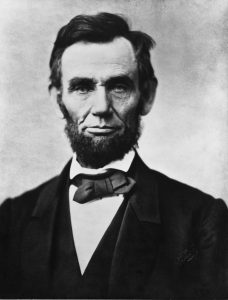
AFTER taking the advice of the 11 year old girl. Chinstrap in place.
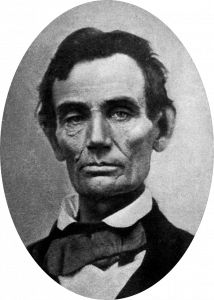
Abraham Lincoln BEFORE the famous Chinstrap
Beard type: Chinstrap
Famous for: Do you need to be told this? (You do? Abraham Lincoln was the 16th American president, most famous for his proclamation of the emancipation of slaves)
Beard Fact: Whilst running for office, Abraham Lincoln was in fact beardless. The now-famous chinstrap wasn’t in place until he received a letter from an 11 year old girl telling him to “grow some whiskers” because she thought his face was too thin. He took her advice, grew the beard, won the election and the rest as they say is history.
Ideal Barber Tools: To get that clean shaven upper lip, we suspect old Abe would have used a traditional cut throat razor, and once he had cultivated that beard of distinction, keeping it well trimmed and groomed would have been easy with a beard and moustache scissor.
2. William Shakespeare
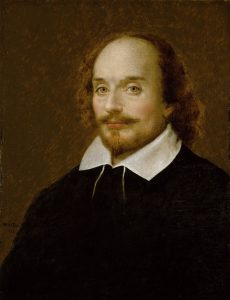
William Page portrait of the Great Bard
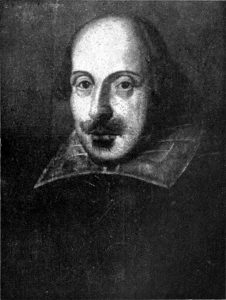
Britannica Portrait of William Shakespeare
Beard type: Small Pointy/Soul Patch (depending on portrait)
Famous for: William Shakespeare is considered the greatest playright and poet of his time, arguably of all time. Responsible for penning (quilling?) such works as Twelfth Night, Romeo and Juliet, Macbeth, Hamlet, King Lear and many others, 37 in total. Sometimes known as the Great Bard, which is but one letter from being Great Beard.
Beard fact: “He that hath a beard is more than a youth, and he that hath no beard is less than a man.” – Taken from Much Ado about Nothing.
Ideal Barber Tools: Being a man of great detail, we think Will as pictured left would have certainly used a beard comb and beard scissors to find just the right shape for his famous facial hair. Although I think he may have been too busy writing his next great play to stock up on barber supplies. A straight razor would have been perfect for tidying up edges. Or perhaps a trip to Ye Olde Barber for a good old fashioned cut throat shave for straight edges. Our DS+ barber scissors would have been the correct tool for he job keeping those flowing locks correctly shaped. In the portrait on the right sporting a simpler style, the beard and moustache scissor alone would have been sufficient.
3. Karl Marx
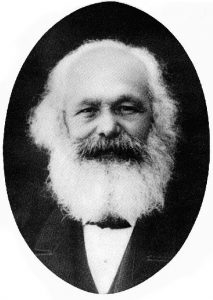
Mr Marx with his famous beard
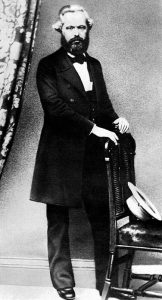
A younger, more dapper Karl Marx
Beard type: Wild and untamed
Famous for: An influential 19th century philosopher and socialist whose ideas and theories collectively known as Marxism, have had profound impact on many modern areas of economy, world politics, and social science.
Beard fact: In the last year of his life, Karl Marx had an Algerian barber shave off his famous beard. “A bald, clean-shaven Karl Marx is almost impossible to imagine – and he made sure that posterity would never see him thus,” writes his biographer, Francis Wheen.
Ideal Barber Tools: Considering that his beard is not particularly kempt, no barber tools would be required to cultivate or maintain his look. However, as it seems to extend and connect with what little hair Karl had remaining, a thorough session in the chair with a pair of DS+ in the hands of a skilled barber to shape the beard into his hair could have worked wonders for him. He is also sporting a great moustache, which after a little trim from the Dark Stag beard and moustache scissors may have revealed a new sophisticated look for Mr Marx. Thankfully his ideological legacy was not tarnished by his bushy beard.
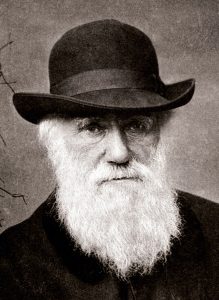
Charles Darwin in 1881
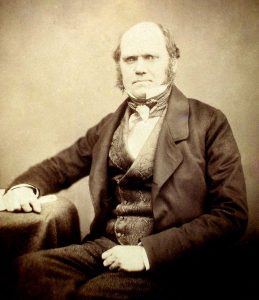
Mr Darwin before his beard in 1855
Beard type: Snowy full beard
Famous for: An English Naturalist best known for his contributions on evolution, in the seminal work ‘on the origin of species’.
Beard fact: Darwin only cultivated his beard in his mid-fifties as an evolution (ho ho) of sideburns he had worn for years prior to this. He allegedly had been suffering from terrible eczema which was worsened by shaving.
Ideal Barber Tools: Whilst we are on the topic of evolution, a great many modern beards could arguably be traced back to this excellent example of a full beard. Certainly, looking rather more like the wisened adventurer he was as opposed to an extra ZZ Top member is largely down to the neatly groomed shaping. This debonair look could be maintained with regular trimming at a good barbers using DS+ barber scissors for shaping, and using our beard and moustache scissors at home (or on long boat voyages in this case) for detail work. Comb through with our aromatic walnut wood beard comb to ensure a tangle free finish. Perfect.
5. Charles Dickens
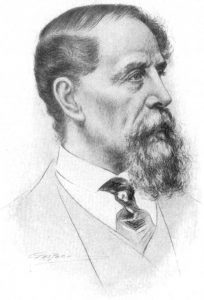
Charles Dickens hiding his weak chin
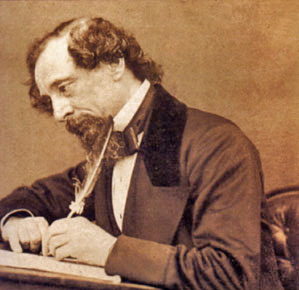
Would he look as writerly without the beard?
Beard type: Grown out door knocker beard
Famous for: An English writer of the Victorian era credited with creating some of the worlds best known characters: Ebeneezer Scrooge, Oliver Twist, The Artful Dodger, Tiny Tim to name but a few.
Beard fact: Whilst his literary chops were strong it is said that Mr Dickens had a rather weak receding chin, and as is characteristic of the Victorian era, he decided to hide it, in this case behind facial hair. It was not possible for him to grow a full beard, leaving the rather scraggly example we see in many portraits.
Ideal Barber Tools: Whilst Mr Dickens sported a notable amount of whiskers to hide his chin, his cheeks and jaw were clean shaven. To achieve this, he could have used a good wet shave such as one from a cut throat razor in the hands of a skilled Victorian barber, or a safety razor such as the SR+ for maintaining at home. In either case a good shaving brush and bowl would make sure of a luxurious wet shave experience.
And there we have it – the top 5 famous historical beards. Keep an eye out for a similar feature on moustaches coming soon.
Until then, tight fades.
Dark Stag Team
All images displayed in this article are used from wikimedia commons.





